I wanted to share an update and learning opportunity with you all. Two weeks ago, I lost a hive, and I've finally had the chance to examine it in detail. For those of you who’ve followed my earlier posts, you’ll know the lead-up to this situation, and for first-year class, this will tie into some of the principles we’ve discussed in class. Have enough honey, we said 80#s. In the second-year class we can discuss this further.
This serves as an important reminder that even in winter, it’s crucial to check in on your hives when conditions allow. In this case, the weather presented a significant challenge. From November 10th to the 27th, we experienced 11 days of rain, and there wasn’t a good opportunity to inspect the hive. By the time mid-December rolled around, I finally managed to take a peek.
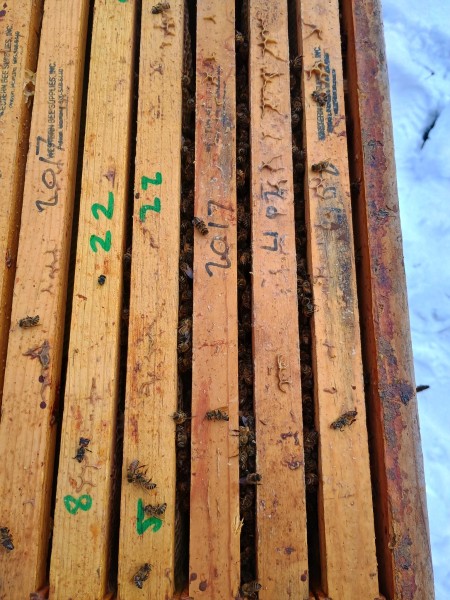
Initial Observation: This is what I saw when I lifted the lid. Last week, the dead cluster was still on top of the frames. Now, the bees have begun to fall through the frames.
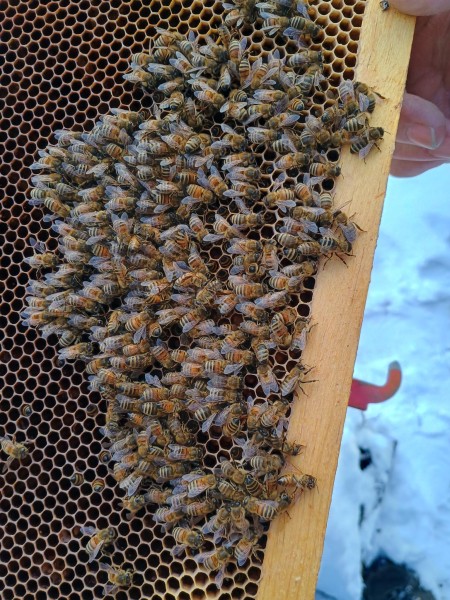
Cluster Arrangement: The cluster remains intact, with bees facing inward. This behavior is something we’ll discuss in detail during the second-year beekeeping class.
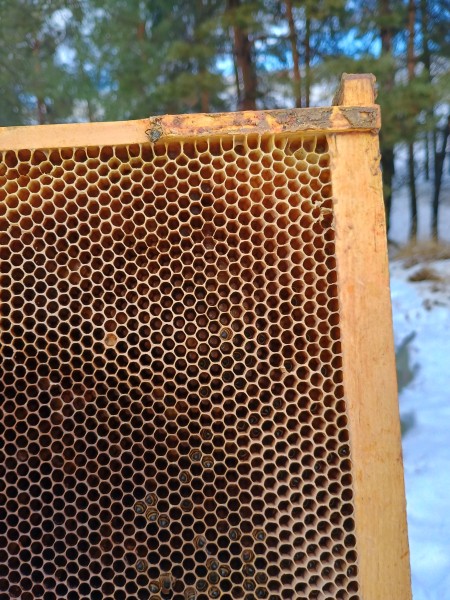
Bee Butts: A frame of bee butts sticking out—indicating they were consuming honey within the comb.
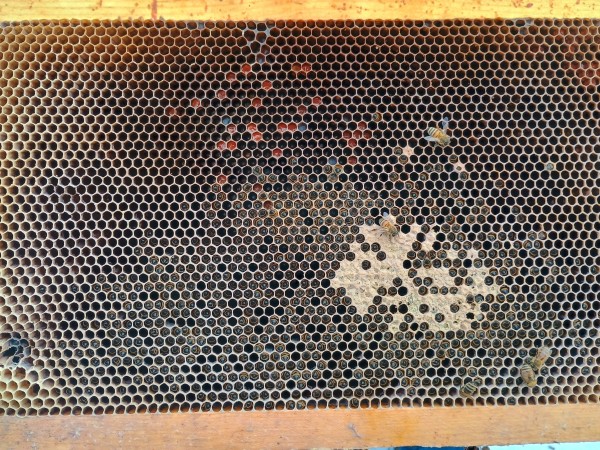
Brood and Bee Bread: Here, the bees had started raising new brood, surrounded by dead bees. Look in the comb. There’s bee bread but no capped honey visible
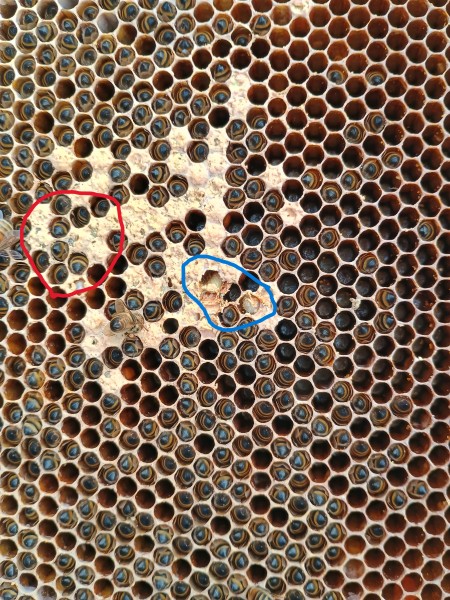
Capped and Uncapped Brood: This image shows some capped brood. The red circle highlights uncapped larvae, or perhaps they were cannibalizing them, while the blue circle shows where I removed the capping. The almost-capped brood suggests the queen laid these eggs around December 10–13, the colony was nearly dead by December 25.
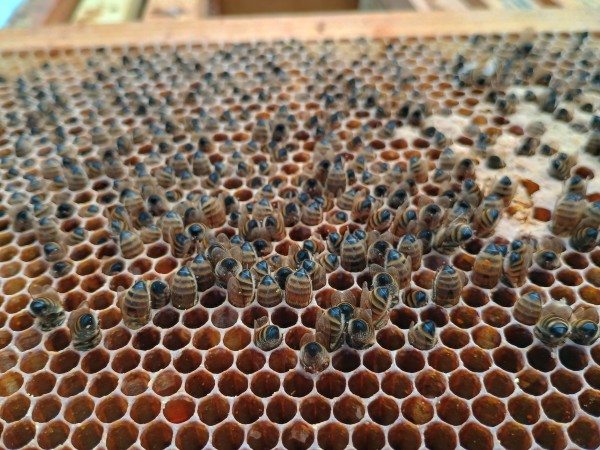
Falling Bees: After lightly tapping the frame, bees began falling out. Removing them prevents them from rotting in the comb.
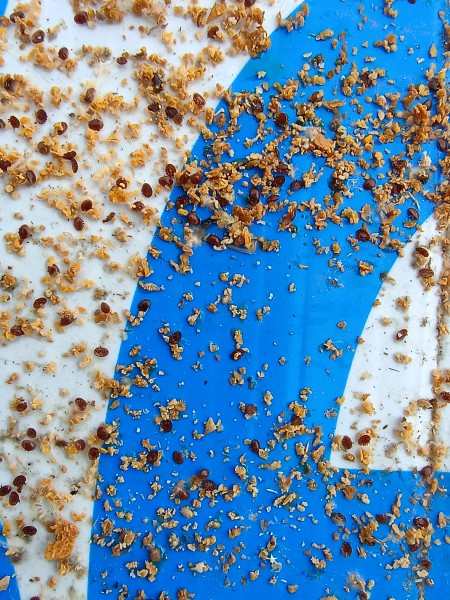
Mites on the Bottom Board: Theis image show the bottom board I slide in during the fall. Examination reveals numerous mites in two different areas. Now you mite ask did the mites kill the hive? It certainly didn’t help. I treated this hive once in mid July and again in September 15th with thymol.
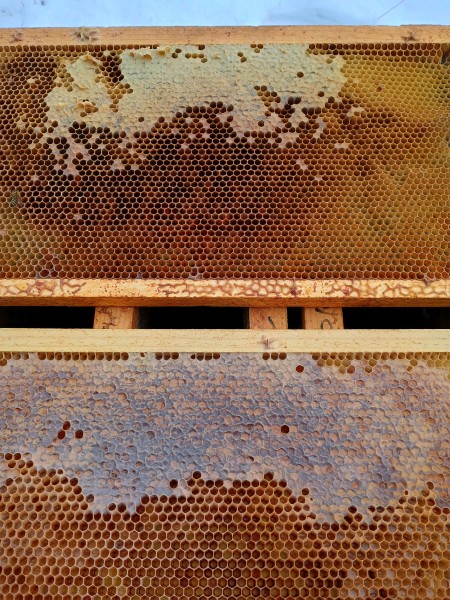
Honey Stores: On both sides of three frames, there was enough honey to last into February. Unfortunately, the bees couldn’t move laterally. It appears they came straight up from the lower brood box, consuming the honey in the middle. Then they moved entirely to one side and depleted those stores. When it came time to return to the opposite side, the cold proved too much for them to manage.
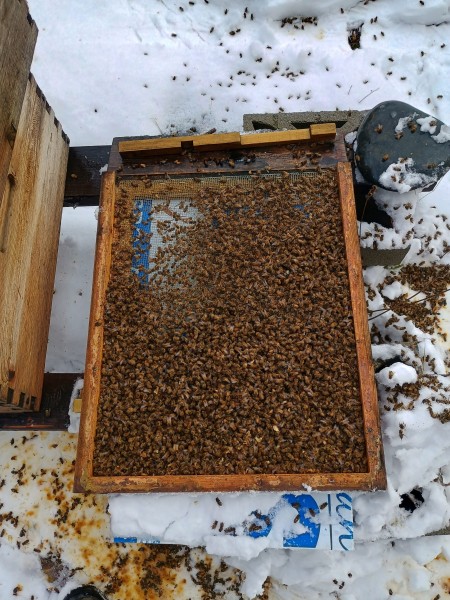
Dead Bees on Screened Bottom Board: The bottom board was packed with an inch-deep layer of dead bees mostly on one side.